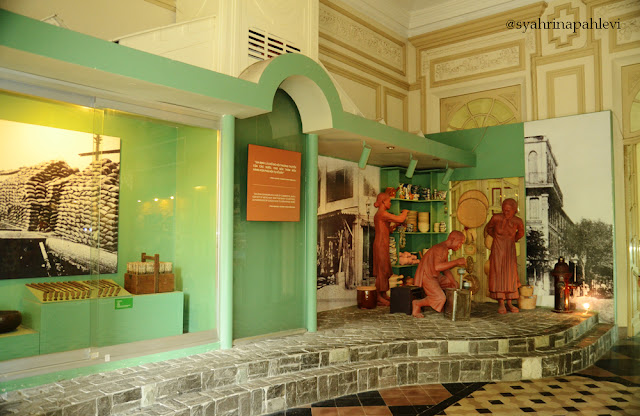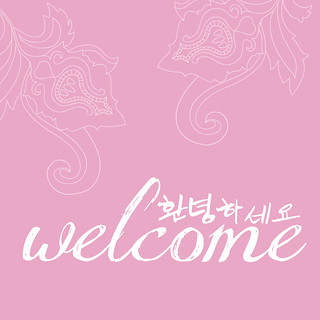National Museum of Ho Chi Minh City
Ho Chi Minh City Museum
Ho Chi Minh
City Museum as known as National Museum of Ho Chi Minh City (Vien Bao Tang Thanh
Pho Ho Chi Minh) was built during the 19th Century (1885 – 1890) the era of
French Colonial in Vietnam with a European design and stylish Chinese style
roof. Alfred Foulhoux, a
French architect, designed it; he blended the Occidental style with Oriental
style. The building was originally intended for use as the
Commercial museum exhibiting native specialities, but it became the Cochinchina
governor’s palace.
Before the fall of Saigon this building known as Gia Long Palace, it was the last residence of President of the Republic of Vietnam Ngo Dihn Diem. In 1945, the building belonged to five owners. The Japanese fascist government took over the French colonial government in March, Yoshio Minoda, the Japanese Governor occupied the palace, then Japanese government entrusted it to the regime of Bao Dai – Tran Trong Kim.
The King’s special envoy of the Cochichina, Nguyen Vaên Sam used as private residence for a short time. On August 25th 1945, the Revolution force lowered Bao Dai force’s flag and raised the revolution’s flag. Then the building became the Southern Provisional Administrative committee’s headquarter.
On September 10th 1945, B.W Roe Lieutenant – colonel (British mission) occupied legally the palace so the Southern Provisional Administrative committee’s headquarter had to move to Doc Ly palace (nowadays is Ho Chi Minh city’s people council).
After re-invading Saigon on May 23rd 1947, the French government entrusted the palace to Le Van Hoach and used as the Southern autonomous government’s headquarter, then it became Tran Van Huu Governor’s palace, the Southern government’s palace on June 2 nd 1948.
After Geneva treaty 1954, Ngo Dinh Diem regime used the building as Quoc Khach palace. On February 27th 1962, the Unification palace bombed, Ngo Dinh Diem used the palace as the presidential palace. Twenty months later, November 1st 1963, Saigon troops took over Ngo Dinh Diem regime. The Unification palace already built in 1962, this building was the Supreme court.
After the fall of Saigon on 30 April 1975, Gia Long Palace was turned into a museum and officially it has been Ho Chi Minh City museum since December 13th 1999.
Located at the corner of Ly Tu Trong Nam Ky Khoi Nghia Street, near to the Reunification Palace, just across a small canal off the Saigon River in District 4. This museum tells the rags-to-equality story of a self-made revolutionary of Vietnam. The relics of Ho Chi Minh's life are many in here, we can see it through photos collection that museum have.
The most interesting room in this museum is the Revolutionary Struggle room, here they tell the struggle of the Vietnamese people to get their Independence, and there is a huge painting about people struggle on the wall inside the room. We also can find some stuff that the use during the struggle era, like the typewriter that was used by Mr Pham Dan, the Major of Political Propaganda and Ideological Education Board of Saigon (1960-1965) or Radio that was used by Mr Huynh Tan Phat, the President of South Vietnam Provisional Government (1969 – 1975).
It is quiet easy to get to the museum, since the Ho Chi Minh city museum bounded by four streets Ly Tu Trong, Nam Ky Khoi Nghia, Pasteur and Le Thanh Ton, we can reached the place in several ways. By bus No 04, 18, 36 from Ben Thanh, Ham Nghi get out at Pasteur – Ly Tu Trong station it located around 50 meters far from the museum.
Place Detail:
Before the fall of Saigon this building known as Gia Long Palace, it was the last residence of President of the Republic of Vietnam Ngo Dihn Diem. In 1945, the building belonged to five owners. The Japanese fascist government took over the French colonial government in March, Yoshio Minoda, the Japanese Governor occupied the palace, then Japanese government entrusted it to the regime of Bao Dai – Tran Trong Kim.
The King’s special envoy of the Cochichina, Nguyen Vaên Sam used as private residence for a short time. On August 25th 1945, the Revolution force lowered Bao Dai force’s flag and raised the revolution’s flag. Then the building became the Southern Provisional Administrative committee’s headquarter.
On September 10th 1945, B.W Roe Lieutenant – colonel (British mission) occupied legally the palace so the Southern Provisional Administrative committee’s headquarter had to move to Doc Ly palace (nowadays is Ho Chi Minh city’s people council).
After re-invading Saigon on May 23rd 1947, the French government entrusted the palace to Le Van Hoach and used as the Southern autonomous government’s headquarter, then it became Tran Van Huu Governor’s palace, the Southern government’s palace on June 2 nd 1948.
After Geneva treaty 1954, Ngo Dinh Diem regime used the building as Quoc Khach palace. On February 27th 1962, the Unification palace bombed, Ngo Dinh Diem used the palace as the presidential palace. Twenty months later, November 1st 1963, Saigon troops took over Ngo Dinh Diem regime. The Unification palace already built in 1962, this building was the Supreme court.
After the fall of Saigon on 30 April 1975, Gia Long Palace was turned into a museum and officially it has been Ho Chi Minh City museum since December 13th 1999.
Located at the corner of Ly Tu Trong Nam Ky Khoi Nghia Street, near to the Reunification Palace, just across a small canal off the Saigon River in District 4. This museum tells the rags-to-equality story of a self-made revolutionary of Vietnam. The relics of Ho Chi Minh's life are many in here, we can see it through photos collection that museum have.
The most interesting room in this museum is the Revolutionary Struggle room, here they tell the struggle of the Vietnamese people to get their Independence, and there is a huge painting about people struggle on the wall inside the room. We also can find some stuff that the use during the struggle era, like the typewriter that was used by Mr Pham Dan, the Major of Political Propaganda and Ideological Education Board of Saigon (1960-1965) or Radio that was used by Mr Huynh Tan Phat, the President of South Vietnam Provisional Government (1969 – 1975).
It is quiet easy to get to the museum, since the Ho Chi Minh city museum bounded by four streets Ly Tu Trong, Nam Ky Khoi Nghia, Pasteur and Le Thanh Ton, we can reached the place in several ways. By bus No 04, 18, 36 from Ben Thanh, Ham Nghi get out at Pasteur – Ly Tu Trong station it located around 50 meters far from the museum.
Place Detail:
Name
of Building: Ho Chi Minh City Museum/ National Museum of Ho Chi Minh City
Address:
No 65 Ly Tu Trong – Be Nghe Ward – District 1
Opening
Hours: Daily from 8am to 5pm
Admission
Fee:
- Pupils: 2000VND/Person
- Students, Adults: 5000VND/Person
- Foreigners: 15000 VND/Person
- Camera For Wedding: 400000 VND/One time
Fax:
08.38298250
Email:
bttphcm114@yahoo.com
Website:
www.hcmc-museum.edu.vn
























































No comments:
Post a Comment